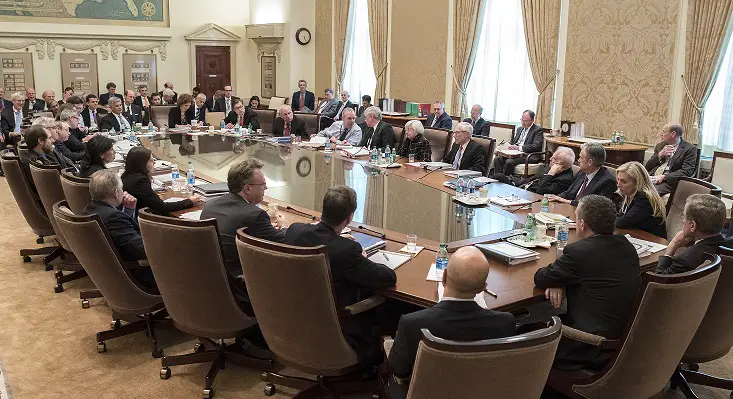The Federal Reserve, as expected, raised its benchmark interest rate by 75 basis points on Wednesday, the most aggressive rate hike sine 1994.
The rate-setting Federal Open Market Committee concluded its two day long meeting with the announcement that the level of its benchmark funds rate was raised to a range of 1.5% to 1.75%, the highest it has been since before the Covid-19 pandemic in March of 2020.
After some initial volatility in stocks following the announcement of the decision, stocks rose after Fed Chairman Jerome Powell spoke in the post-meeting news conference.
Powell said, “Clearly, today’s 75 basis point increase is an unusually large one, and I do not expect moves of this size to be common.” He added that the July meeting’s hike should be expected to be between 0.5% and 0.75%, and that decisions will be made “meeting by meeting,” and the Fed will “continue to communicate our intentions as clearly as we can.”
Powell continued, “We want to see progress. Inflation can’t go down until it flattens out. If we don’t see progress … that could cause us to react. Soon enough, we will be seeing some progress.”
When the expectations of individual members of the FOMC are examined, it indicates a much more aggressive series of rate increases is forthcoming in an attempt to arrest current inflation rates, which are moving at their fastest pace since 1981. Overall, individual members expect the Fed’s benchmark rate will close out the year at 3.4%, according to the midpoint of individual member’s expectations of a target range. That is 1.5% higher than members were estimating in March. They expect the rate to then rise to 3.8% in 2023, an increase of 1% over estimates in March.
Official estimates of 2022 GDP growth have declined as well, with FOMC officials now predicting just a 1.7% gain in GDP, down from 2.8% in March.
The inflation prediction also rose to 5.2% this year, from 4.3%, however their core inflation prediction, which excludes food and energy, was put at 4.3%, just 0.2% over the previous expectation. Since April’s core PCE was 4.9%, that implies they see an easing in price pressures in the near future.
Overall, the committee’s statement struck an optimistic tone, despite inflation. Their statement said, “Overall economic activity appears to have picked up after edging down in the first quarter. Job gains have been robust in recent months, and the unemployment rate has remained low. Inflation remains elevated, reflecting supply and demand imbalances related to the pandemic, higher energy prices, and broader price pressures.”
All FOMC members approved the statement, with the exception of Kansas City Fed President Esther George. who favored a smaller half-point increase.
The Fed’s Benchmark rate is used by banks to determine what they will charge each other for short term borrowing. However the effects of that travel through the economic system, affecting regular consumer debt products, from adjustable rate mortgages, to credit cards and auto-loans. As a result it affects the amount of consumer credit available to drive spending and fuel economic growth.
Technically the Fed’s tightening of monetary policy is occurring as economic growth declines, despite prices still rising, an economic condition termed stagflation.
Among the projections released by the committee Wednesday was an expectation the unemployment rate, currently at 3.6%, will reach 4.1% by 2024.
Although Powell hopes for a “softish landing,” clearly there are many factors that will complicate that objective.

